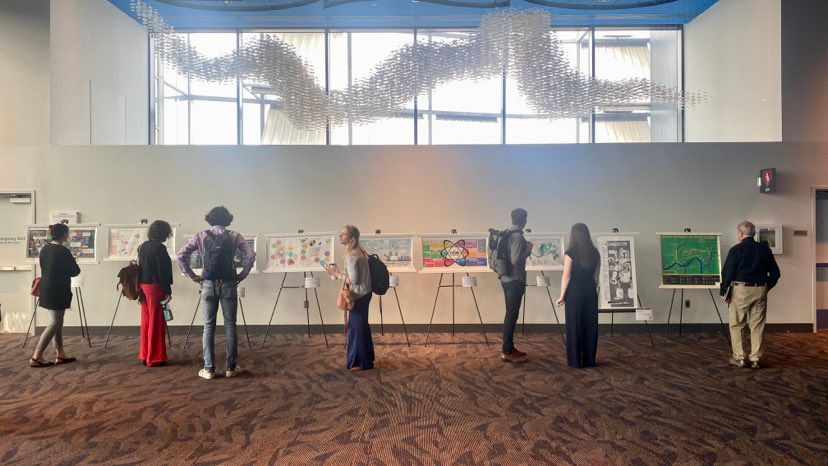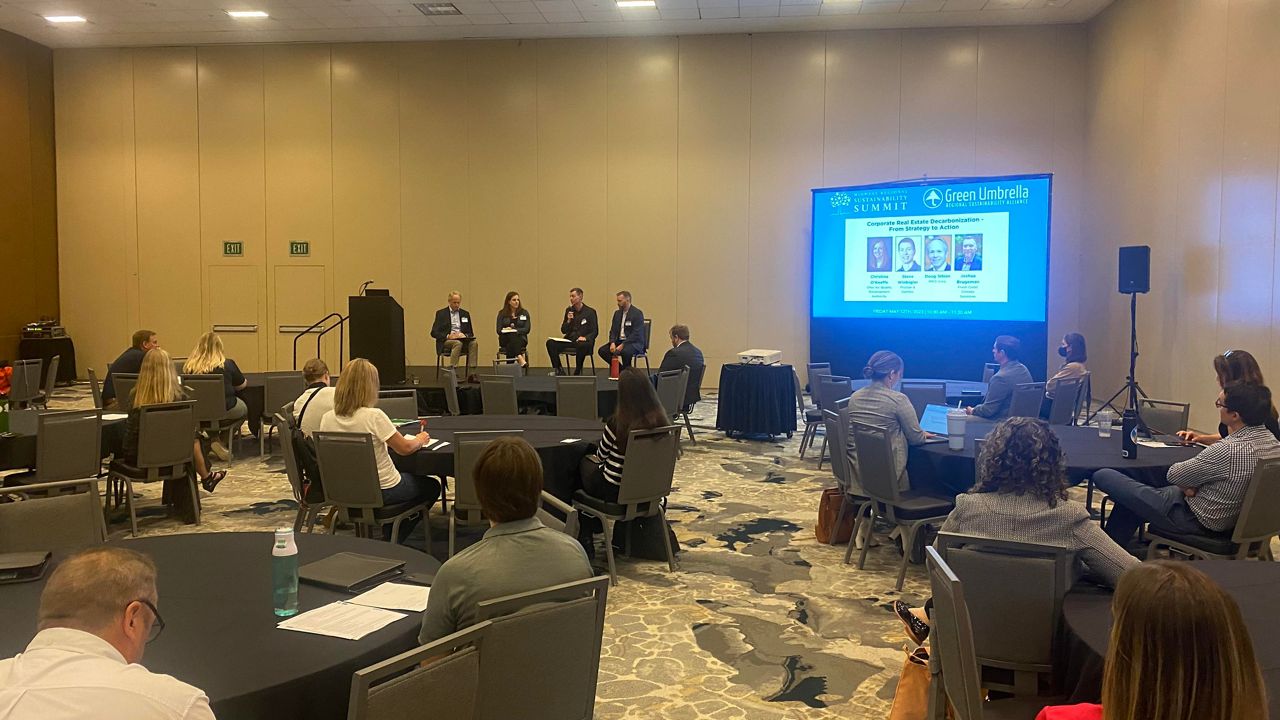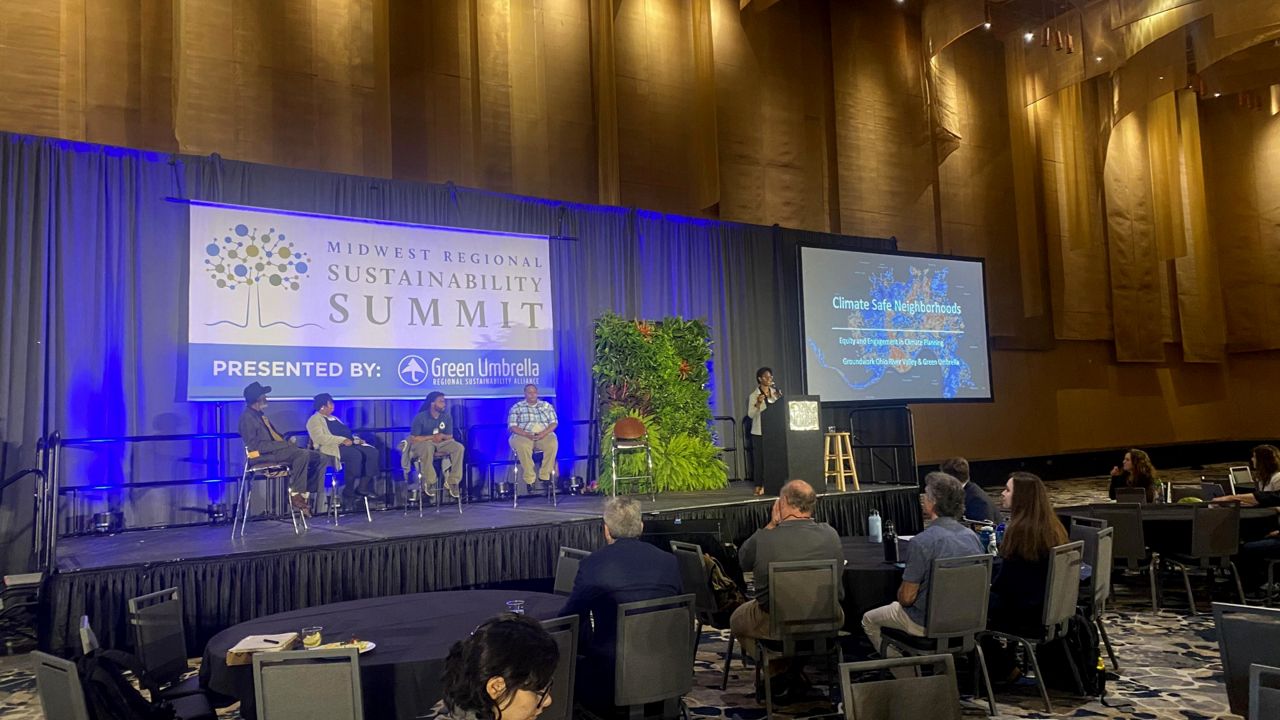CINCINNATI — Green Umbrella has spent the past 25 years working to draw attention to the greater Cincinnati region’s need to embrace and prepare for climate change.
Over the past quarter-century, the nonprofit has brought together elected leaders, subject experts and the Average Joe to discuss the region’s most challenging environmental problems. One of their primary vehicles for those conversations over the past decade has been the Midwest Regional Sustainability Summit.
On Friday, Green Umbrella convened its 10th summit at a new, bigger location at Duke Energy Convention Center in downtown Cincinnati.
What You Need To Know
- A group of 600 people gathered in downtown Cincinnati last week for the 10th Midwest Regional Sustainability Summit
- The group spent the day attending workshops, taking part in panel discussions focused on addressing climate change
- Duke Energy Convention Center hosted the summit this year to accommodate the record number of attendees
- A key component of the event is networking
A group of 600 attendees spent the day in more than 20 breakout sessions, panel discussions and workshops. Some topics discussed included government policy, transportation, food systems, climate justice, eco-friendly infrastructure and the green economy.

The third-floor space also featured an art show with interactive exhibits, a virtual reality space, and a healing and wellness area, according to Charlie Gonzalez, member relations and events manager for Green Umbrella.
The summit moved downtown this year because it offered a better Cincinnati experience for out-of-town guests, Gonzalez said. He also said there were people visiting from Chicago, Cleveland, Indianapolis, Milwaukee and “everywhere else in Ohio and Kentucky.”
But the move also had a practical component, Gonzalez said. This year’s registration was 50% greater than the previous record year, and they also saw increases in exhibitors and advertisers.
That growth is emblematic of the commitment the region has made to sustainability efforts, he said.
“We want people to think about possibilities of what’s possible if we get this right,” Gonzalez added. “This is a passion movement here in Cincinnati and we want to help empower people to find their place and creating a better world.”
The theme of this year’s summit is “imagine what’s possible.” It was a powerful touchpoint in the keynote speech delivered by Katharine Wilkinson, executive director of The All We Can Save Project and a bestselling author.
“The mind-boggling part of climate decision-making, and climate action is that it is happening everywhere all the time so we need leadership on this topic from everywhere,” said Wilkinson, named one of 15 “women who will save the world,” by Time magazine.
“From different departments within a city government to different corporations operating in a city to community groups and neighborhoods — there’s such a need for climate leadership and all those spaces. But it’s unusual for those different corners to be in a shared space and have a chance for dialogue and to work together,” she added. “Spaces like this, where we can have some genuine dialogue, are really important.”
Andy Holzhauser, a Green Umbrella board member, recalled attending the first Midwest Regional Sustainability Summit more than a decade ago.
“It was a small group of passionate people,” said Holzhauser, a partner and the CFO of Cincinnati-based Donovan Energy. “You need to have that passion, but if it stays small, you’re never going to have the teach needed to make a difference.”
Over the years, the event has grown into an attraction that draws CEOs of companies, government lobbyists, climate scientists, elected officials, and community leaders. He mentioned commitments from companies like Procter and Gamble and Fifth Third Bank. But they haven’t forgotten about “Jim from down the street,” he said.

Having everyone at the table is critical, Holzhauser said, because they need every voice to speak up and weigh in to get anything done.
“There’s a lot of work to be done. To do that, the rooms must be bigger, and we have to engage more people,” he added.
Sherry Nicholas, a Cincinnati resident, made the trip downtown to learn about electric vehicle charging. Her condominium complex wants to install one, and she wanted to talk to people like Holzhauser to go through the options.
While most interested in the panel on electrification, she found discussions on food sharing and sustainability through the community.
“It was so interesting,” she said. “Glad to have stuck around for the other panels.”
Nicholas voiced excitement over the number of government leaders, corporate partners, nonprofits and subject experts in attendance. She especially appreciated the scheduled networking time before and after the event.
“We’re moving in the right direction,” Nicholas said of the Queen City. “I believe the grassroots movement locally is pushing corporations toward sustainability efforts as opposed to the other direction. I’m happy the big wigs are here to listen, and truly, sincerely, have a conversation.”
One of the elected officials in the room was Cincinnati Council member Meeka Owens, chair of the Climate, Environment and Infrastructure Committee. She called the summit an “important part” of the city’s climate action planning because it connects experts and advocates with the needed people and resources.
One exhibitor in the room was Blue Ocean Solids, a sustainability-focused water treatment company based in Loveland, Ohio.
Kathleen Collier, the company’s director of sales and marketing, called the Sustainability Summit a key opportunity for Blue Ocean to expand its network. She described the water treatment market as a “this is how it’s always been done” situation. The summit gave her team a chance to “meet people that are looking to do the same things we are,” she said.
“It’s just a wonderful community,” Collier added of those in attendance Friday.
This summit is a gathering of the region’s sustainability community and “thought leaders,” said Oliver Kroner, director of the city of Cincinnati’s Office of Environment and Sustainability. He described it as an opportunity to connect and hear about emerging work in climate change preparation.
He called it “energizing” to see how the different local efforts weave together and support each other.
Members of Kroner’s team were at the Duke Energy Convention Center to “share and learn,” he said. Along with elected leaders, Kroner took part in a panel on the recently approved five-year update to the Green Cincinnati Plan, the city’s climate action plan. They also discussed the many city-led and community projects underway to make it a reality.
Examples include the largest city-led solar array in the country and Cincinnati’s 2030 District, a commitment by businesses, developers and the city to cut carbon use by the year 2030.
Other members of his panel included Owens, Council member Liz Keating and Hamilton County Commissioner Denise Driehaus.
“Cincinnati continues to receive national and international attention for urban climate work. Of course, sustainability is not a competition; it’s work that requires collaboration and innovation,” Kroner said. “The summit is an opportunity to showcase all of this good work and inspire more.”
“Our goal was for everyone in attendance to walk away with a sense of hope and understanding of how they individually fit into the collective climate effort,” he added.



